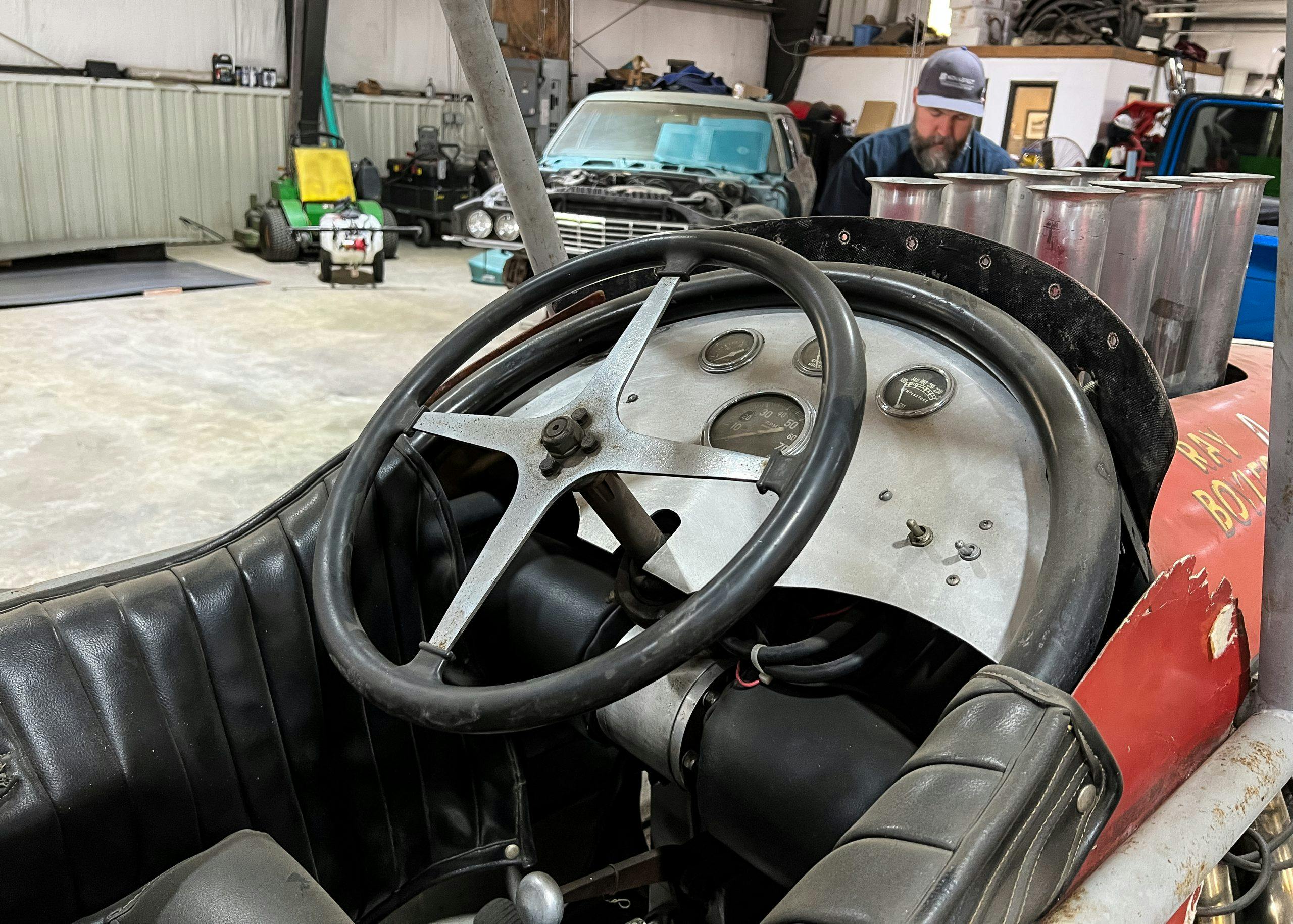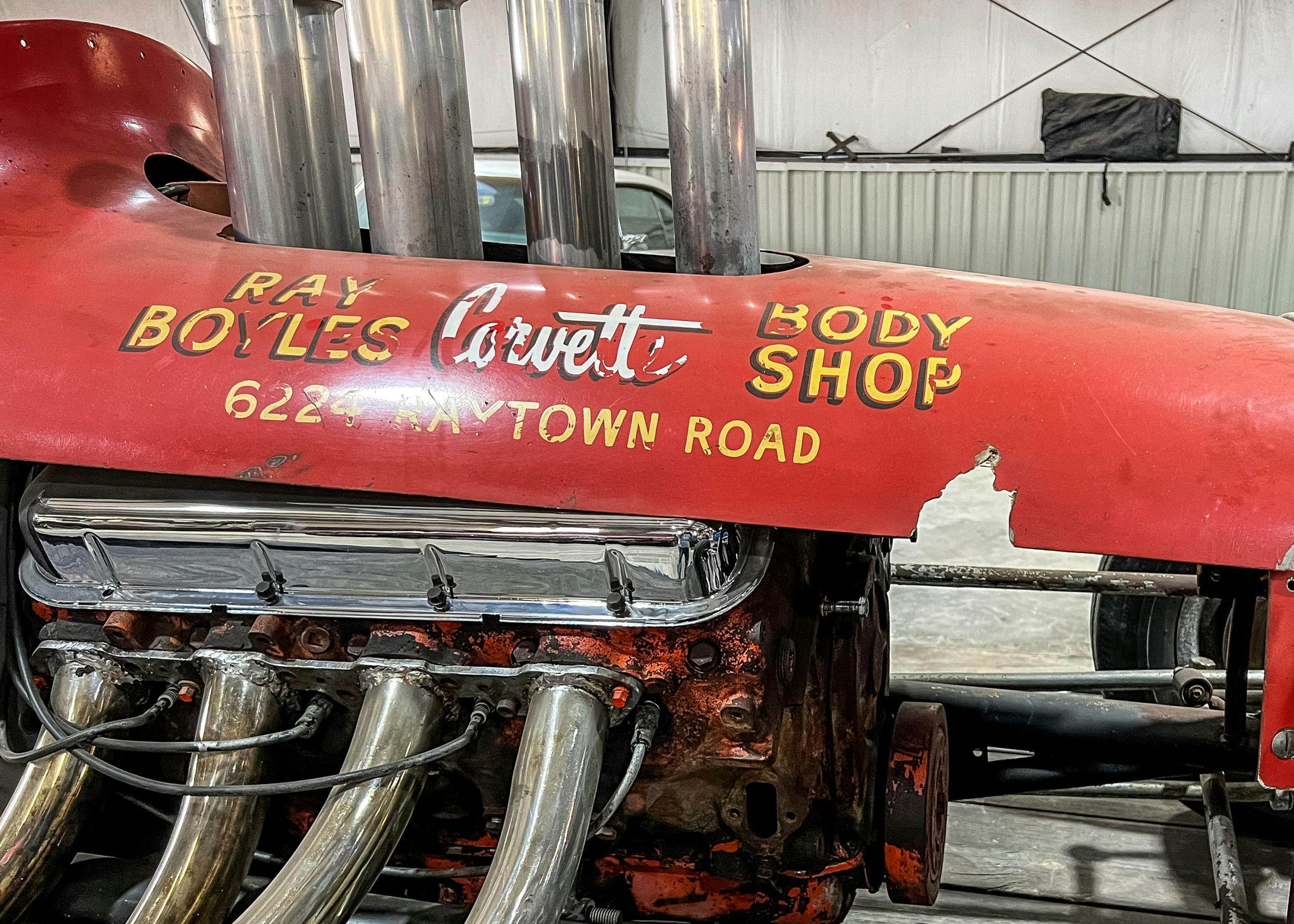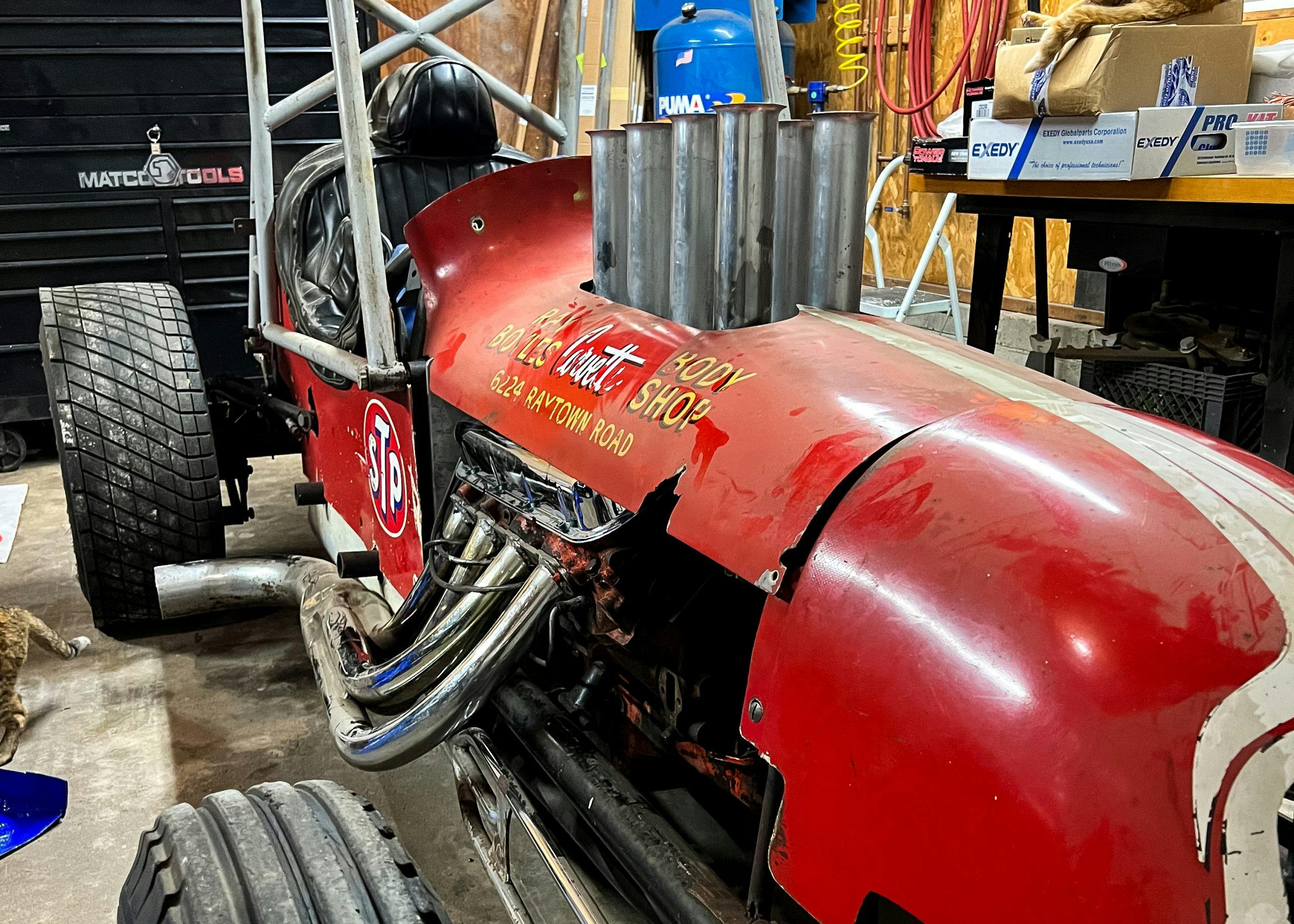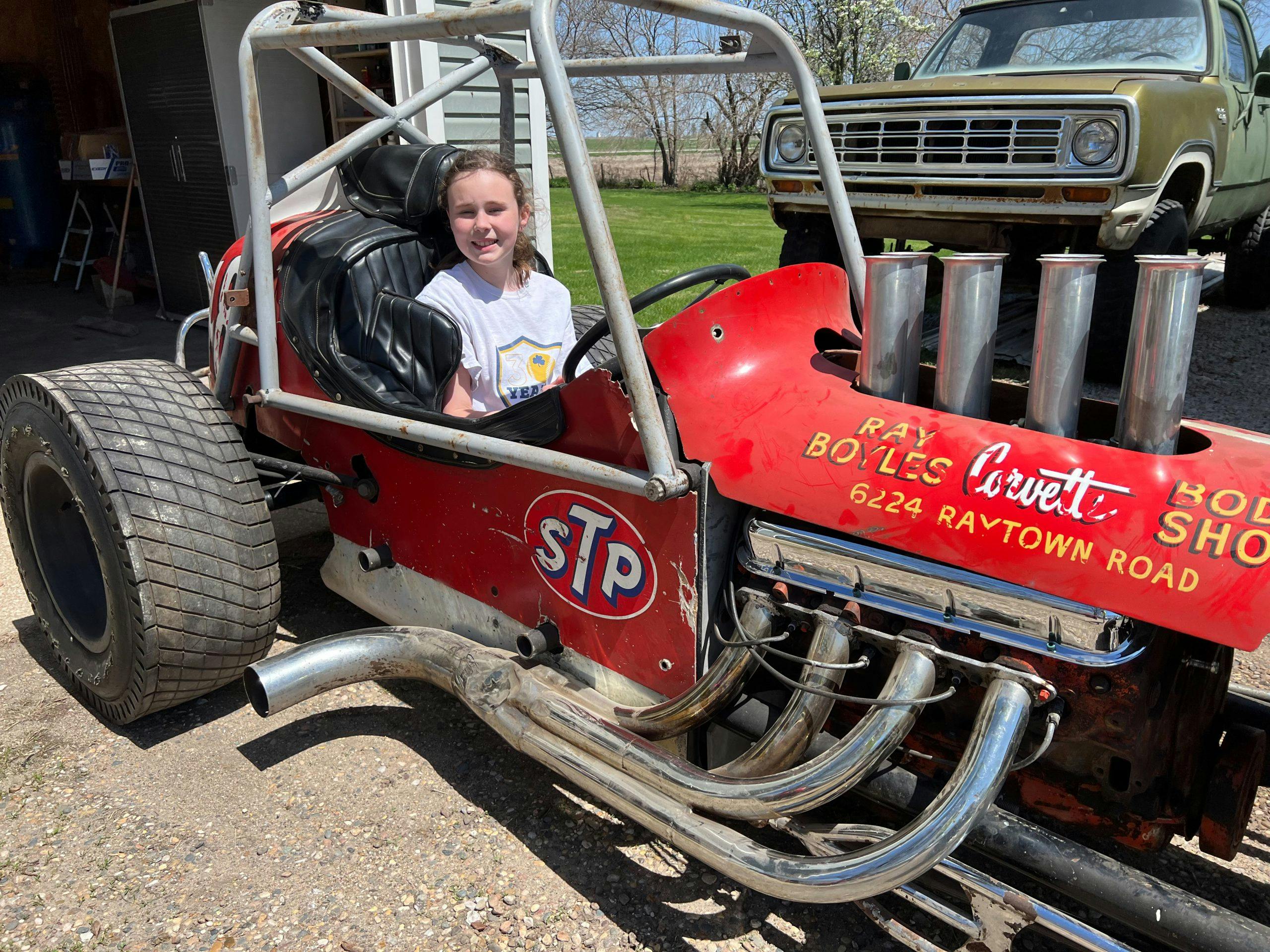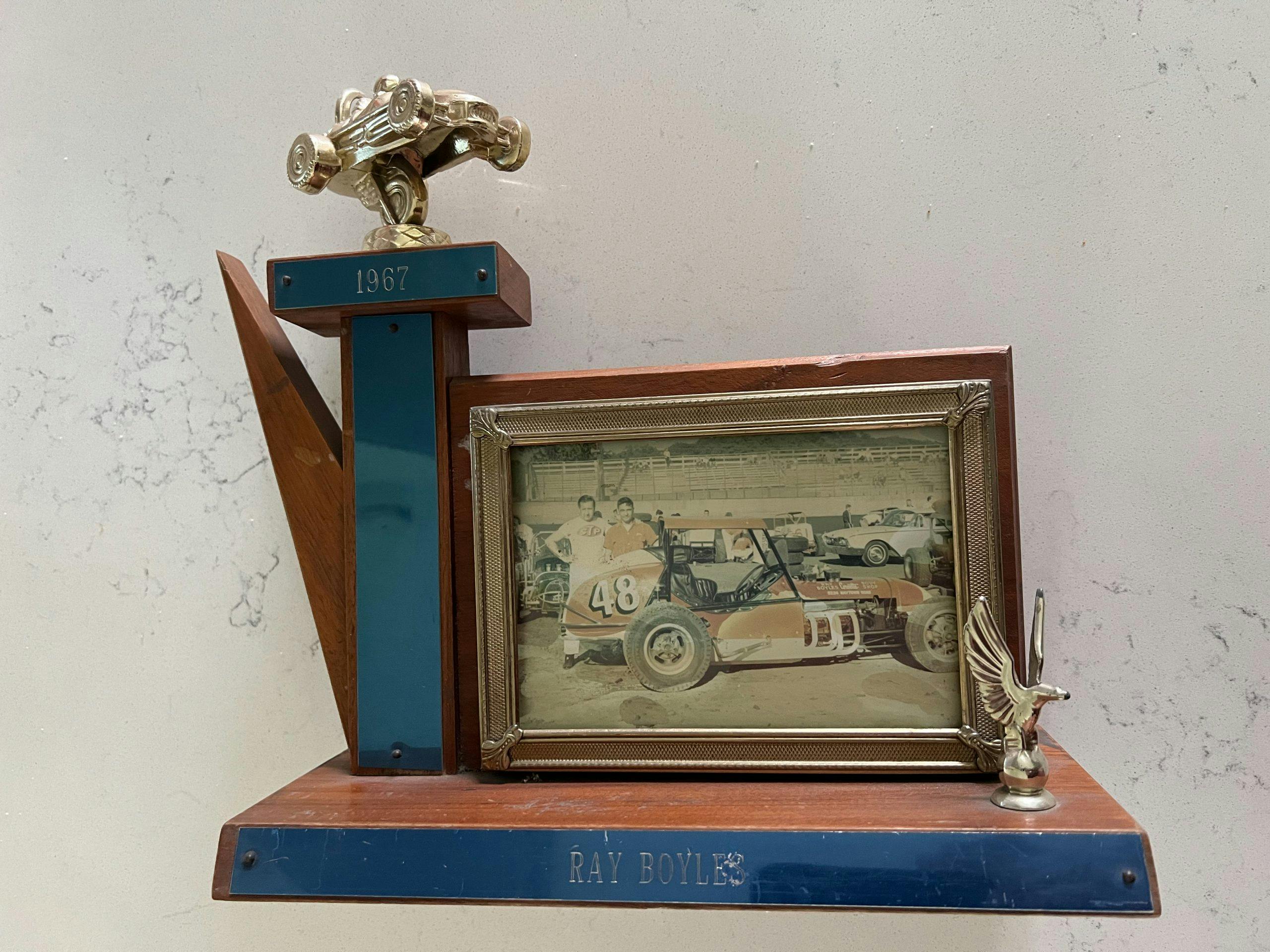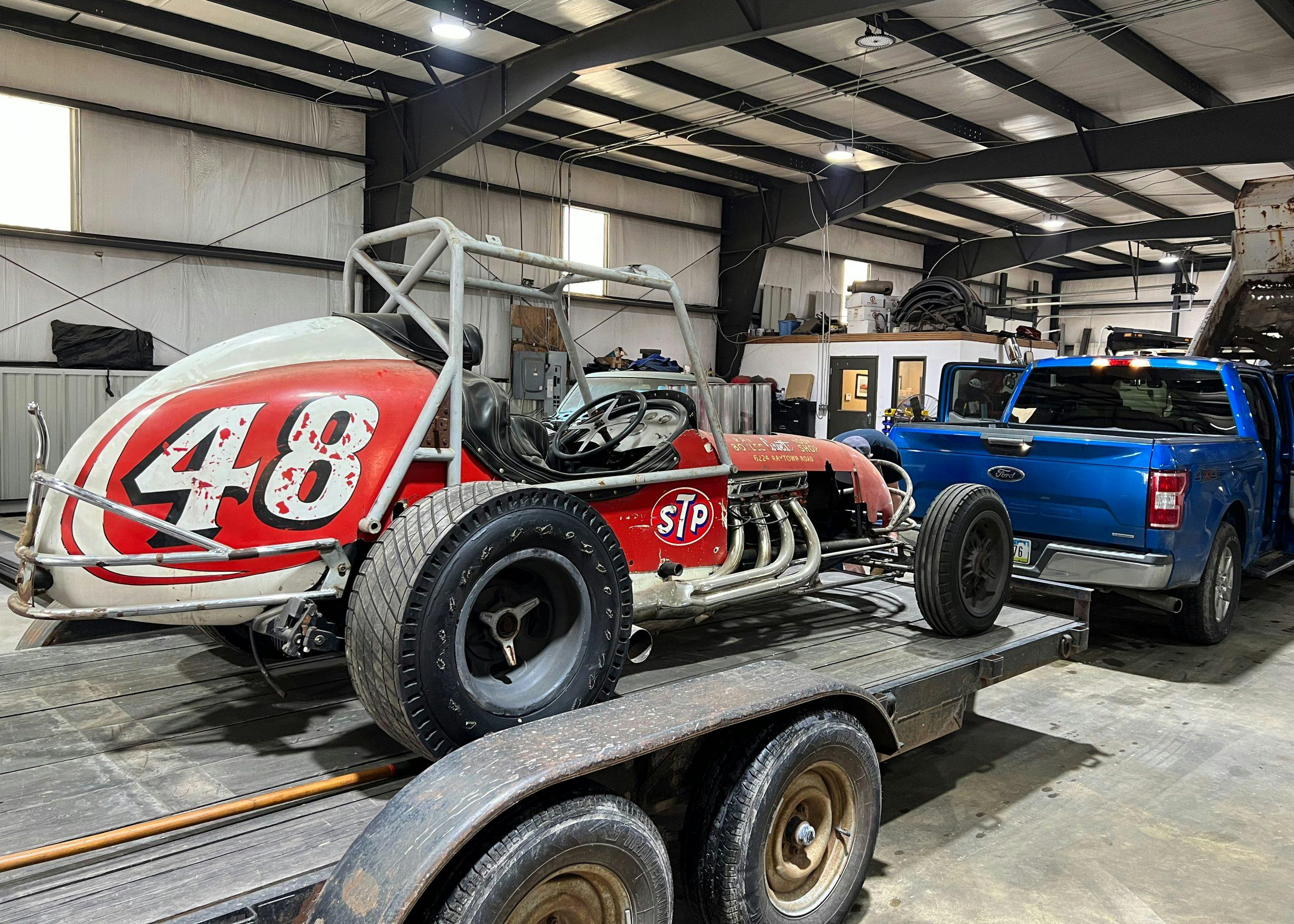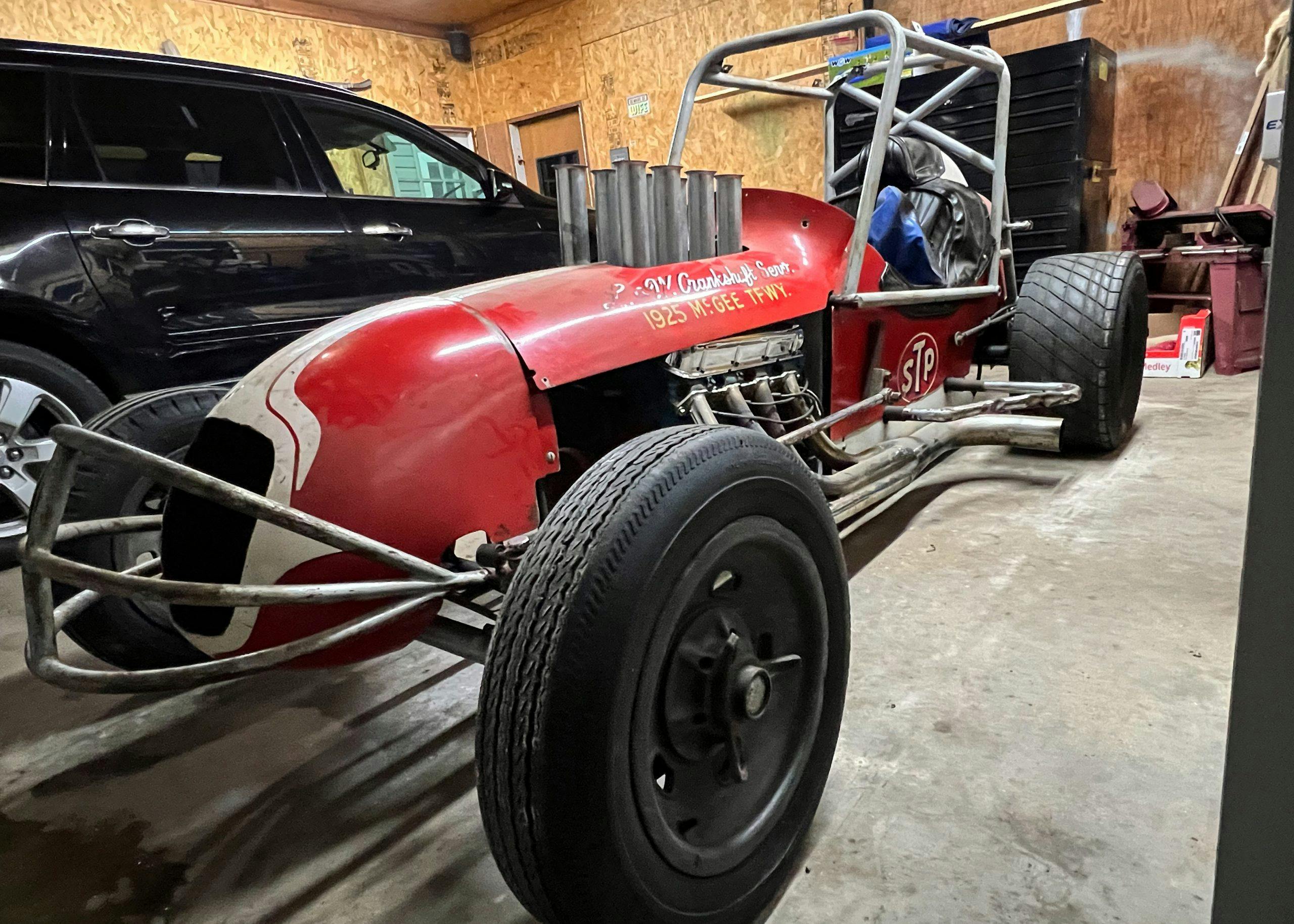Barn find circle tracker carves a fresh path
Brian Salazar didn’t realize what he was getting himself into when he submitted the winning eBay bid. It was earlier this summer, and he was suddenly the new owner of a barn find race car.
“Honestly, it is more than I wanted,” says Salazar of his Sixties-era caged sprint car, which spent a majority of its retirement sealed away in storage. “I’m not that type of guy, but it’s been a great story.”
While trawling local listings, a red-and-white circle tracker caught Salazar’s eye. Even though Salazar has lived in the heart of Midwest dirt racing—and only an hour from the Sprint Car Capital of the World in Knoxville, Iowa—for the past decade, he had never owned, let alone aspired to own, anything like it. But the old sprinter’s all-original condition lured him in.
A rolling time capsule, the car sported a coat of cracked paint, a rusty roll cage, and chrome fuel injection stacks. Under the hood was a 396 cubic-inch Chevrolet big-block mated to a Culbertson in-out box. Halibrand magnesium knockoff wheels wrapped in dry-rotted Firestone dirt rubber completed the eye-catching relic.
Over the next few months, Salazar went deep down the rabbit hole into the history behind his vintage racer—a journey sparked by an unexpected phone call. Salazar wasn’t an hour down the road, towing the car with an open trailer and his F-150, when his phone rang. On the other end of the line: historian Ed Sanders.
“I’m like a tick on a hound dog,” says Sanders. “I don’t quit ’til I find the story.” The Missouri-based circle track history buff made a series of queries once he heard the car had been sold, and in less than 15 minutes, he was speaking to its new owner. Sanders could remember when the car terrorized local Midwest tracks, including Olympic Stadium in Kansas City. “It was a heck of a car back in the day,” he says, “I hate to see it leave Missouri.
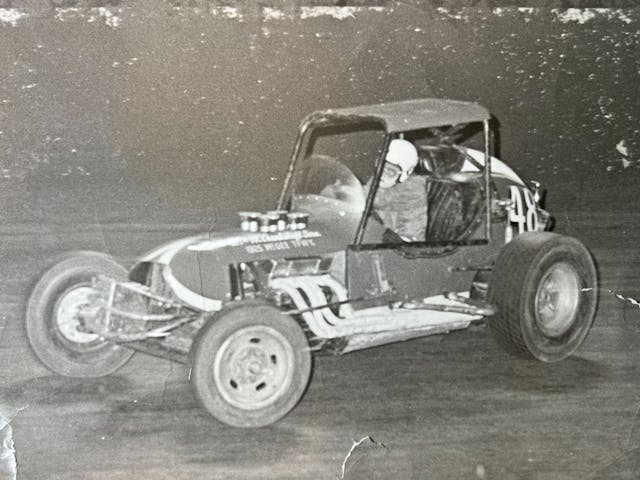
The oldtimer nevertheless supplied the info to the new owner, Salazar, filling the information gaps from the initial eBay listing. Built by Junior Hower for driver Jim McMurray (no relation to NASCAR driver), the car originally featured a small-block Chevy. The engine was a far more conventional—and lighter—powerplant for that era of circle tracker. “I don’t think Junior would’ve done it,” Sanders says of the 396 cubic-inch transplant. According to the historian, Hower was an experienced builder and one of the top welders in Kansas City to boot, having taught the trade at a local college.
Sanders suggested reaching out to Ray Boyles, the nephew of Junior Hower and one of the original sponsors of the team.
In 1963, a young Ray Boyles damaged his 1960 Corvette. Rather than taking the fiberglass beauty to a shop, he exacted a shade-tree repair in his own garage. Word quickly spread about Boyles’ skills, and before long he had his own body shop exclusively for Corvettes, located in a southeast suburb of Kansas City. Ray Boyle’s Corvette Village was on the map, and by 1966 he was buying, selling, and repairing sports cars from around the country.
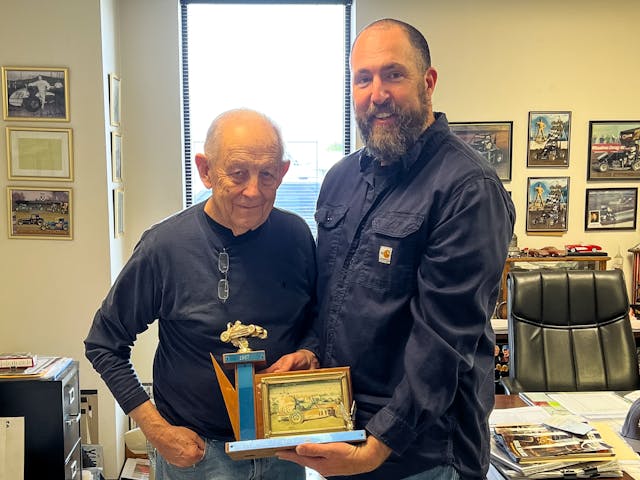
In addition to his love for polished plastic fantastics, Boyles was—and still is—an avid dirt tracker. (His son Joe has numerous Chili Bowl entries and his grandson races throughout the Midwest today.) Back in the Sixties he supported the #48 team and in return they painted his business’ name and address across the hood. He even rebuilt the front section of the frame, in the Corvette shop, when it was damaged by driver McMurray mid-race. “I would’ve probably put it back with small-block in it, but they put the big-block back in, so … well … ok,” he says with a chuckle. Boyles also informed Salazar that the #48 was chosen because it was double Hower’s usual choice, #24.
The Corvette whisperer invited Salazar to his Kansas City dwelling to share photos—suggesting the car presents today as it ran in the late-1960s—and show him a trophy he received for sponsoring the car back in the day. Before Salazar could leave, Boyles challenged him to a homemade racing board game.
Over the next couple months, Salazar went back-and-forth on what he should do with the car. A museum? A restoration? Each new crack in the paint was a falling grain of sand in the hourglass. While he waffled, he enjoyed the relic for what it was: a conversation piece. He took it to the Albaugh Classic, one of Iowa’s largest car shows, and let anyone willing to fold themselves through the cage sit in the car. Sandwiched among throngs of muscle machines and super cars, the lowly barn-find sprinter stole the show.
In the midst of the action, another show-goer approached Salazar and the two began chatting about the mystery 396. “He told me that if this was installed in 1970—which I think that’s the year they swapped engine—there was a chance it could be out of a 1970 Chevelle” says Salazar, clearly excited over the discovery. “After a quick Google search we found the VIN to be a match.” This meant the 396 cubic-inch engine had a larger bore from the factory which bumped the cubes to 402.
It’s discoveries like this that keep the car’s story interesting. Salazar began a personal adventure of grassroots automotive archeology and came back with more knowledge than he ever thought possible, not to mention a wealth of new friends. From playing a board game with a total stranger to being the star of a car show, Salazar reveled in the newfound territory.
“When you start talking to people who have been there, done it, touched it, know so much about it, and then they tell you about each person involved and their personality, the whole experience becomes so powerful.”
While he’s still not sure what he’ll end up doing with the old sprinter, Salazar is certain that he would embark on this journey all over again, given the chance.

